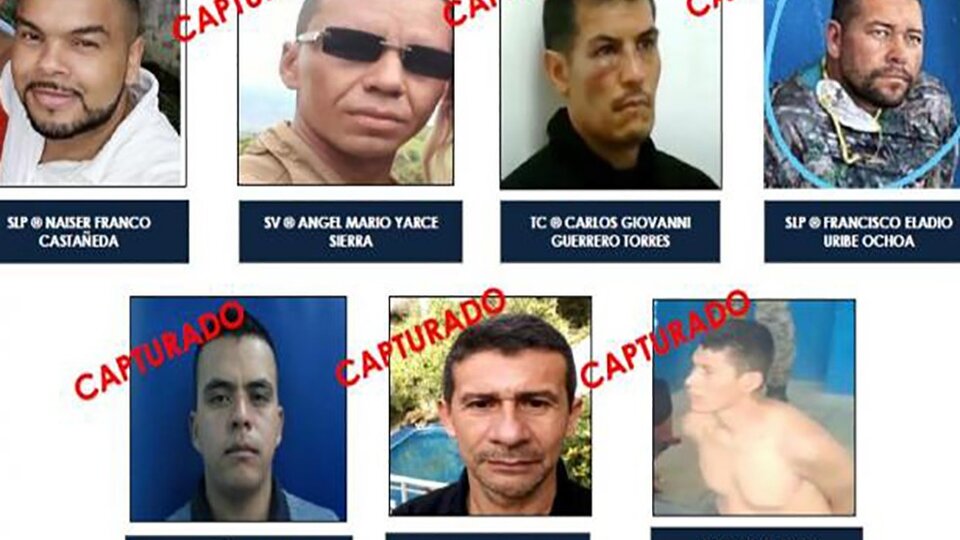
[ad_1]
Four former Colombian military detainees in Haiti confessed responsibility for the assassination of President Jovenel Moise, in an action carried out on July 7 at his residence in Port-au-Prince in which his wife Martine was also injured. This was reported by the program Noticias Caracol de Colombia, which had access to 15 hours of audio recordings in which four of the 18 people involved recount their side of what happened that day and in the hours following the assassination. The order of a former Haitian justice ministry official, detainees say, was to end the life of the president at the request of local elected officials who wanted to take power. The mercenaries reportedly worked for Miami-based CTU Security (Counter Terrorist Unit Federal Academy).
“Kill everyone”
Those speaking in the audios were identified as Retired Army Captain Germán Rivera García, Retired Second Lieutenant Jheyner Carmona, Former Sergeant Ángel Yarce Sierra and Retired Private Naiser Franco Castañeda. According to the accounts obtained by Noticias Caracol, Joseph Felix Badio, a former Haitian justice ministry official, is the one who gave Rivera the order for the operation that led to Moise’s murder.
In one of the tapes, Rivera, whom other ex-servicemen called “Mike,” said: “Badio said everyone should be killed. It was all the police, the president’s security, all those inside the house, that they were to be killed ”. Initially, the plan was to detain Moise, but Badio said the orders were no longer the same and his goal was to leave no one alive at the presidential residence.
Thus, on July 7 at one in the morning and accompanied by Badio, American citizen James Solages and four local police officers who disappeared from the scene after the crime was committed, the ex-soldier left in six cars with the aim of executing Moise. “They arrested and neutralized the police officers who were there,” said former Sergeant Ángel Yarce. Former serviceman Duberney Capador would oversee the operation inside the house and Rivera would wait at the entrance.
The information published by Noticias Caracol indicates that Former soldier Víctor Pineda Cardona fired 12 shots at President Moise with an M4 rifle. “They say it was Pineda. They listened to him. He is extremely worried, this boy has no peace.”, we hear who identifies as Franco in another of the audios.
frustrated escape
Colombian media reported that the assault on Moise’s residence lasted about 30 minutes and After assassinating the Haitian president, the mercenaries searched for money and valuables. Before the operation, they had been warned that Moise had between 18 and 45 million dollars at home: in Jovenel and Martine Moise’s room they found two suitcases and three boxes apparently loaded with tickets. Part of the loot had to be delivered, probably, to the firm CTU Security, the one in charge of recruiting them..
The group that organized the operation loaded the money into vehicles and, according to the established plan, He went to the presidential palace since there the new president of Haiti was going to take office, which they were supposed to take care of.. “(Retired sergeant) Capador took us to the palace because in the palace they were going to protect us, and the police were there and they were going to protect us,” says who says he is Yarce.
Next the Haitian police blocked their passage with trucks and tanks, so the mercenary gang took refuge in a house from which they were then expelled with weapons and tear gas. Three ex-servicemen died and the rest fled to the Taiwanese embassy seeking diplomatic protection, although they were eventually arrested.
Moise’s assassination was committed, according to investigations, by a command of 26 mercenaries that he broke into the presidential residence without encountering resistance from the security forces guarding the president. According to the latest police data, 44 people are detained, including 12 members of this institution as well as 18 Colombians, mostly retired military, and six Haitians, including three American citizens.
.
[ad_2]
Source link
 Naaju Breaking News, Live Updates, Latest Headlines, Viral News, Top Stories, Trending Topics, Videos
Naaju Breaking News, Live Updates, Latest Headlines, Viral News, Top Stories, Trending Topics, Videos